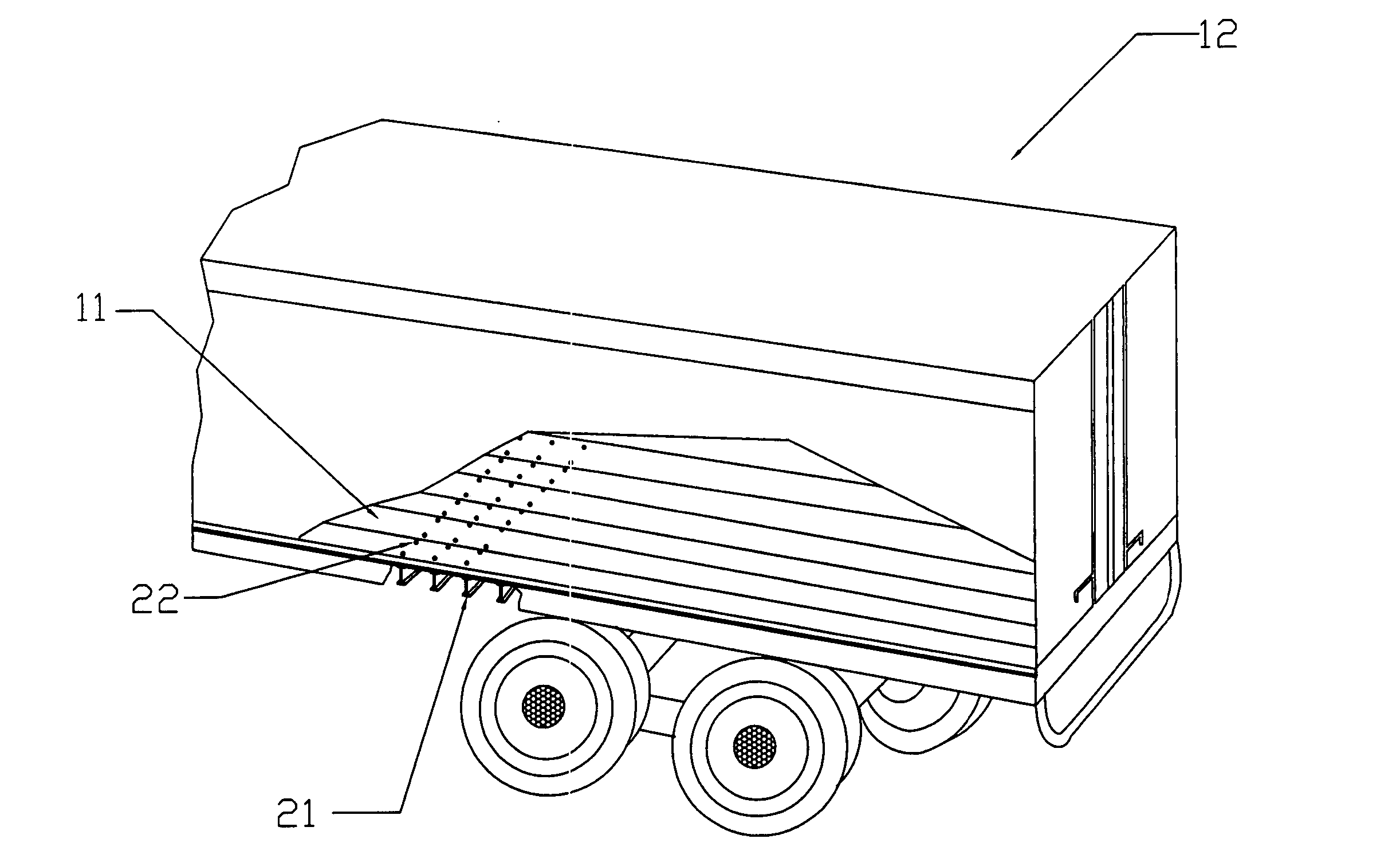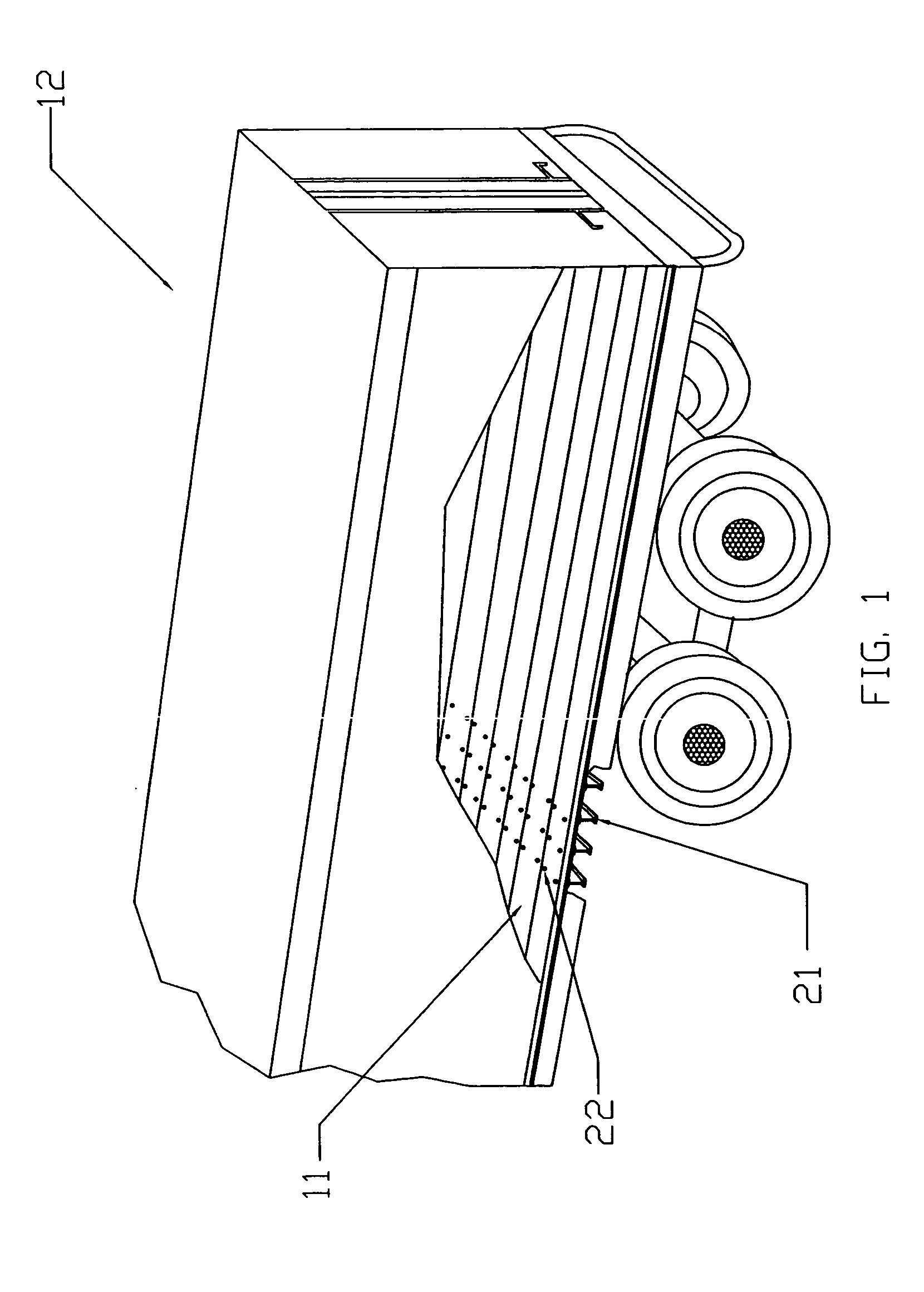Durable wood-plastic composite flooring for trailers
a technology of wood-plastic composite flooring and trailers, which is applied in the direction of wood layered products, transportation and packaging, synthetic resin layered products, etc., can solve the problems of much lower hardness of woods, achieve improved moisture resistance, durability, surface characteristics, and reduce cos
- Summary
- Abstract
- Description
- Claims
- Application Information
AI Technical Summary
Benefits of technology
Problems solved by technology
Method used
Image
Examples
Embodiment Construction
[0051] Conventional laminated wood floor board 11 for over-the-road van trailers 12 such as that shown in FIG. 1 is normally manufactured with hardwoods such as oak, hard maple, birch, beech, ash and the like. Any wood can be used for this purpose. However, in commercial practice, laminated wood flooring for van trailers and containers are made from oak and hard maple. These woods are preferred for their availability, strength, and hardness. Many other available woods are not used due to their lack of strength and / or hardness. Examples of strong woods that are not used due to low hardness are southern yellow pines, yellow-poplar, western larch, Douglas-fir, etc.
[0052] Lower grade lumber (such as No. 2 Common and No. 3A Common for hardwoods) of oak and hard maple (sugar maple) are the most common hardwoods used for laminated wood flooring. The lumber used is 4 / 4 (1 inch nominal) or 5 / 4 (1¼ inch nominal) in thickness with varying widths of boards that are allowed in the selected grad...
PUM
| Property | Measurement | Unit |
|---|---|---|
| Bending strength | aaaaa | aaaaa |
| Bending strength | aaaaa | aaaaa |
| Bending strength | aaaaa | aaaaa |
Abstract
Description
Claims
Application Information
 Login to View More
Login to View More - R&D
- Intellectual Property
- Life Sciences
- Materials
- Tech Scout
- Unparalleled Data Quality
- Higher Quality Content
- 60% Fewer Hallucinations
Browse by: Latest US Patents, China's latest patents, Technical Efficacy Thesaurus, Application Domain, Technology Topic, Popular Technical Reports.
© 2025 PatSnap. All rights reserved.Legal|Privacy policy|Modern Slavery Act Transparency Statement|Sitemap|About US| Contact US: help@patsnap.com



